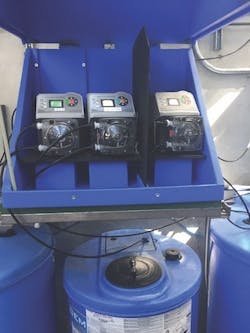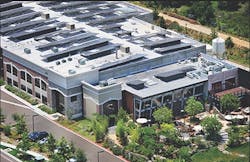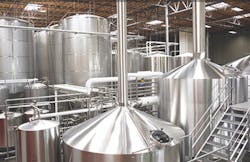About the author:
Amparo Burke is advertising manager for Blue-White Industries. Burke can be reached at [email protected].
Stone Brewing has come a long way since opening in San Diego, California, in 1996. The company was listed in the Inc. 500 | 5000 Fastest Growing Private Companies list 11 times, and has been named the “All-time Top Brewery on Planet Earth” by BeerAdvocate magazine twice.
From the beginning, Stone Brewing has had a goal to brew outstanding, unique beers while maintaining an unwavering commitment to sustainability, business ethics and the art of brewing.
The company grew from a small microbrewery with just two founders, into one of the largest craft breweries in the U.S. Stone Brewing now employs more than 1,100 men and women.
The company is the ninth-largest craft brewer in the U.S., and has joined artisanal brewers across the world in a quest to show the public that there are more—and better—choices beyond the world of industrial beer. And Stone Brewing is a strong advocate for environmental responsibility.
Part of being socially and environmentally responsible includes proper handling of wastewater produced in the brewing process. The wastewater must be filtered and purified before being discharged. Stone Brewing chose Blue-White Industries to assist it in finding the best solution for treating wastewater generated by its craft brewery.
Compliance Solution
Stone Brewing is regulated by the county and state and is required to meet wastewater discharge protocols. The brewery and the packaging hall generate on average, approximately 100,000 gallons of wastewater per day. To achieve the standards required for safe disposal of wastewater, Stone needed reliable, operator friendly metering pumps that would deliver accurate quantities of chemicals into its treatment system.
Stone Brewing installed four of Blue-White’s Flex-Pro A2 peristaltic chemical metering pumps to assist with the purification of the wastewater generated by its craft brewery.
Two of the A2 pumps inject a solution of 12.5% sodium hypochlorite for use in the membrane bioreactor (MBR) filter backwashes. MBR processes can produce effluent of high quality so it can be safely discharged into coastal waterways or be reclaimed for urban irrigation or other non-potable use.
One A2 pump injects 93% sulfuric acid prior to reverse osmosis. This is also used in the process of removing effluent materials from the water molecules. Another A2 pump injects 12 to 14% sodium hydroxide to bring the reclaimed water to a pH of 8 so it does not corrode the pipes.
Meeting Discharge Protocols
The compact pumps handle the variety of aggressive chemicals being injected into the wastewater without issue, and they were easy to install in addition to being operator friendly.
Water technicians at Stone Brewing appreciated the ease of use and the electronic features of the pumps, and particularly noted the ease of using the touchpad, which is outfitted with menu driven software. The VGA graphic multi-color backlit display presents motor speed, input signals, percent speed, and service and alarm status at a quick glance, as well, while being SCADA ready with upgradeable firmware.
The successfully offered precision chemical metering to assist with the purification of the brewery’s wastewater, so it could effectively meet its state and county discharge requirements and maintain the brewery’s commitment to sustainability and the environment.



